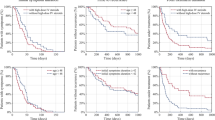Abstract
The objective of the study was to evaluate the amended International Classification of Headache Disorders (third edition, beta version, ICHD-3 beta) with a retrospective analysis. A total of 22 patients diagnosed with painful ophthalmoplegia and Tolosa–Hunt syndrome (THS) in our hospital were retrospectively studied. The following clinical data were collected: symptoms, signs, location of inflammatory tissue, time interval of paresis following the onset of pain, pain and signs of resolution, follow-up and relapse. Pain and diplopia were found in 22 (100 %) and 20 cases (91 %). The sympathetic nerve was involved in 6 cases (27 %). Paresis followed the pain for an average of 8 ± 5.87 days. Serial magnetic resonance imaging (MRI) revealed granulomatous lesion that was visible in 20 patients (91 %). 19 patients (86 %) demonstrated the lesions located in the cavernous sinus, orbital apex or superior orbital fissure. One lesion extended to the intracranial structure. Pain was relieved in 20 cases (91 %) within 72 h and no patient had complete relief from paresis. According to our study, we think the time course of relief should be undefined. Headache location is hard to describe accurately. Normal MRI should be involved in THS diagnoses. The lesion of THS can extend beyond the cavernous sinus and the orbit. The time interval between headache and paresis can exceed 2 weeks.


Similar content being viewed by others
References
Classification Committee of the International Headache Society (2013) The international classification of headache disorders, 3rd edition (beta version). Cephalalgia 33:629–808
Gladstone JP (2007) An approach to the patient with painful ophthalmoplegia, with a focus on Tolosa–Hunt syndrome. Curr Pain Headache Rep 11:317–325
Colnaghi S, Versino M, Marchioni E, Pichiecchio A, Bastianello S, Cosi V, Nappi G (2008) ICHD-II diagnostic criteria for Tolosa–Hunt syndrome in idiopathic inflammatory syndromes of the orbit and/or the cavernous sinus. Cephalalgia 28:577–584
LaMantia L, Curone M, Rapaport AM, Bussone G (2006) Tolosa–Hunt syndrome: critical literature review based on IHS 2004 criteria. Cephalagia 26:772–781
Bruyn GW, Hoes MJAJM. (1986) The Tolosa–Hunt syndrome. In: Vinken PJ, Bruy GW, Klawans HL (eds) Handbook of clinical neurology, vol 4 (48), Chapter 19. Elsevier Pub. Co, Amsterdam, pp 291–307
Goadsby PJ, Lance JW (1989) Clinicopathological correlation in a case of painful ophthalmoplegia: Tolosa–Hunt syndrome. J Neurol Neurosurg Psychiatry 52:1290–1293
Zhang X, Zhou Z, Steiner TJ, Zhang W, Liu R, Dong Z, Wang X, Wang R, Yu S (2014) Validation of ICHD-3 beta diagnostic criteria for 13.7 Tolosa–Hunt syndrome: analysis of 77 cases of painful Ophthalmoplegia. Cephalalgia 34:624–632
Classification Committee of the International Headache Society (2004) The International Classification of Headache Disorders, 2nd edition. Cephalalgia 24:9–160
Kline LB, Hoyt WF (2001) The Tolosa–Hunt syndrome. J Neurol Neurosurg Psychiatry 71:577–582
Tessitore E, Tessitore A (2000) Tolosa–Hunt syndrome preceded by facial palsy. Headache 40:393–396
Curone M, Tullo V, Proietti–Cecchini A, Peccarisi C, Leone M, Bussone G (2009) Painful ophthalmoplegia: a retrospective study of 23 cases. Neurol Sci 30:133–135
Jain R, Sawhney S, Koul RL, Chand P (2008) Tolosa–Hunt syndrome: MRI appearances. J Med Imaging Radiat Oncol 52:447–451
Roman-Goldstein SM, Jones A, Delashaw JB, McMenomey S, Neuwelt EA (1998) Atypical central nervous system lymphoma at the cranial base: report of four cases. Neurosurgery 43:613–616
Leijzer CTJM, Prevo RL, Hageman G (1999) Meningioma presenting as Tolosa–Hunt syndrome. Clin Neurol Neurosurg 101:19–22
Cakirer S (2003) MRI findings in Tolosa–Hunt syndrome before and after systemic corticosteroid therapy. Eur J Radiol 45:83–90
Abdelghany M, Orozco D, Fink W, Begley C (2014) Probable Tolosa–Hunt syndrome with a normal MRI. Cephalalgia. doi:10.1177/0333102414539053
Jain R, Sawhney S, Koul RL, Chand P (2008) Tolosa–Hunt syndrome: MRI appearances. J Med Imaging Radiat Oncol 52:447–451
Guedes BV, da Rocha AJ, Zuppani HB, da Silva CJ, Sanvito WL (2010) A case review of the MRI features in alternating Tolosa–Hunt syndrome. Cephalalgia 30:1133–1136
Zurawski J, Akhondi H (2013) Tolosa–Hunt syndrome—a rare cause of headache and ophthalmoplegia. Lancet 382:912
Jimenez-Caballero PE, Florensa J, Marsal-Alonso C (2005) Tolosa–Hunt syndrome with normal neuroimaging. A report of three cases. Rev Neurol 41:30–33
Wasmeier C, Pfadenhauer K, Ro¨ sler A (2002) Idiopathic inflammatory pseudotumor of the orbit and Tolosa–Hunt syndrome—are they the same disease? J Neurol 249:1237–1241
Bosch J, Ortega-Aznar A, Tintore M et al (2000) Hypertrophic pachymeningitis.A review of the histories of two cases and pathological relationship with the Tolosa–Hunt syndrome and the orbital pseudotumor. Rev Neurol 31:946–951
Acknowledgments
This research received no specific grant from any funding agency.
Conflict of interest
The authors report no conflicts of interest. The authors alone are responsible for the content and writing of the paper.
Author information
Authors and Affiliations
Corresponding author
Additional information
R. Hao and Y. Ke contributed equally to this work.
Rights and permissions
About this article
Cite this article
Hao, R., He, Y., Zhang, H. et al. The evaluation of ICHD-3 beta diagnostic criteria for Tolosa–Hunt syndrome: a study of 22 cases of Tolosa–Hunt syndrome. Neurol Sci 36, 899–905 (2015). https://doi.org/10.1007/s10072-015-2124-2
Received:
Accepted:
Published:
Issue Date:
DOI: https://doi.org/10.1007/s10072-015-2124-2




